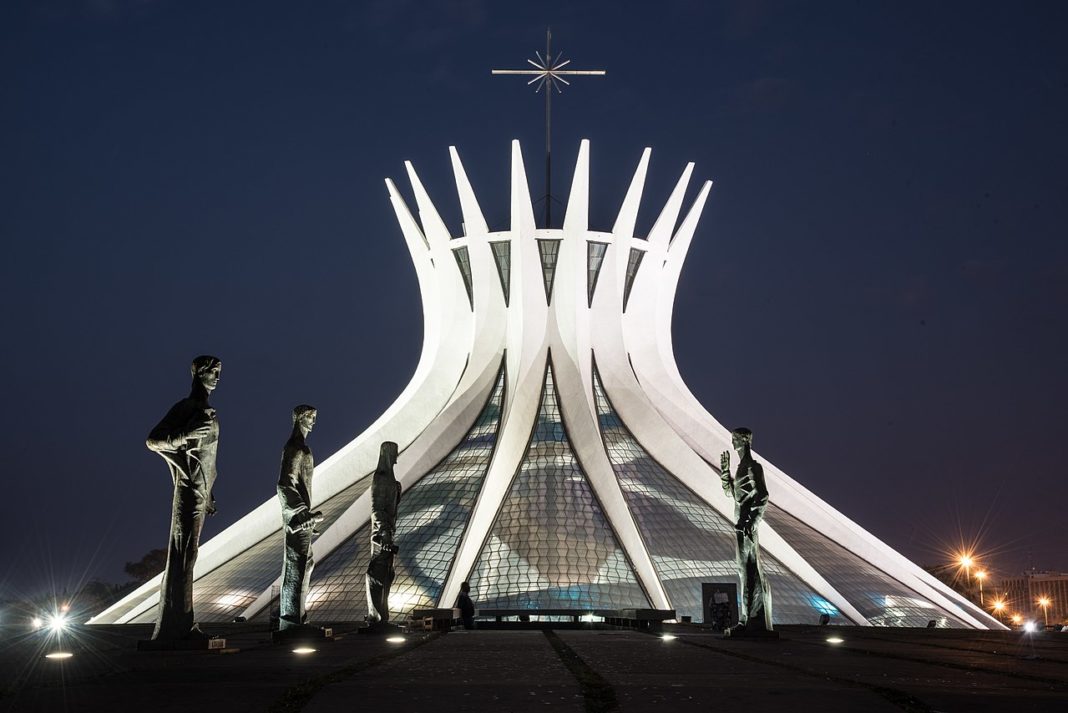The Cathedral of Brasília (Portuguese: Catedral Metropolitana de Brasília, “Metropolitan Cathedral of Brasília”) is the Roman Catholic cathedral serving Brasília, Brazil, and serves as the seat of the Archdiocese of Brasília. It was designed by Brazilian architect Oscar Niemeyer and calculated by Brazilian structural engineer Joaquim Cardozo, and was completed and dedicated on May 31, 1970. The cathedral is a hyperboloid structure constructed from 16 concrete columns, weighing 90 tons each.
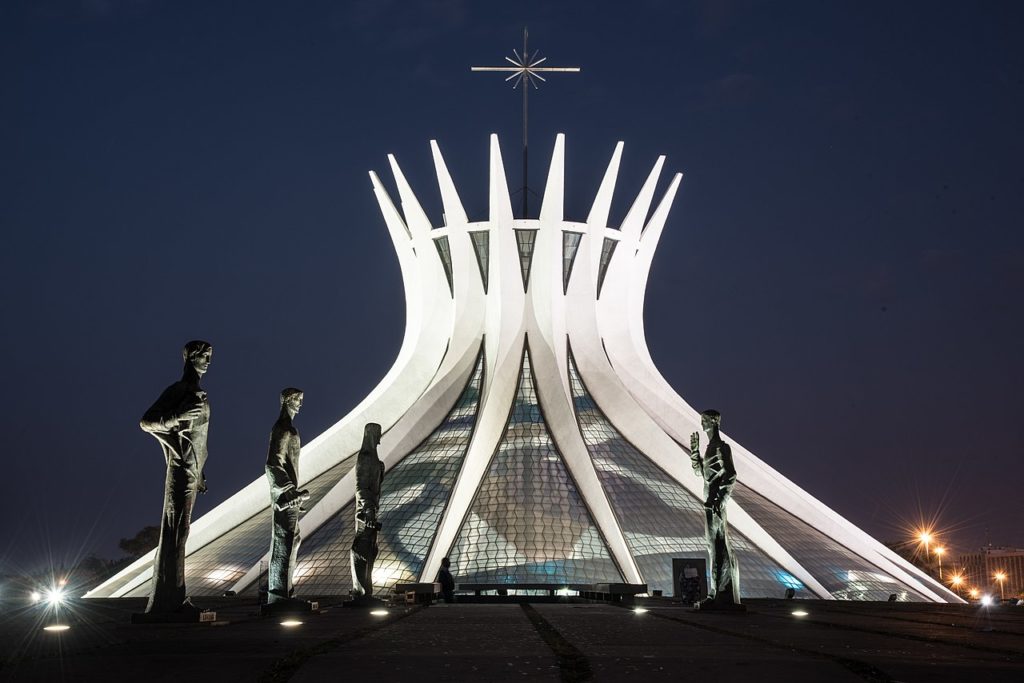
In the square access to the cathedral, are four 3-meter tall bronze sculptures representing the four Evangelists created by sculptors Alfredo Ceschiatti and Dante Croce in 1968. A 20-meter tall bell tower containing four large bells donated by Spanish residents of Brazil and cast in Miranda de Ebro also stands outside the cathedral, to the right as visitors face the entrance. At the entrance of the cathedral is a pillar with passages from the life of Mary, mother of Jesus, painted by Athos.
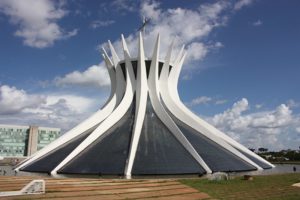
A 12-meter wide, 40-centimeter deep reflecting pool surrounds the cathedral roof, helping to cool the cathedral. Visitors pass under this pool when entering the cathedral.
The cathedral is capable of holding up to 4,000 people. The baptistery is to the left of the entrance and can be entered either from the cathedral or via a spiral staircase from the entrance plaza. The walls of the oval baptistery are covered in ceramic tiles painted in 1977 by Athos Bulcão. Offices for the Archdiocese of Brasilia were completed in 2007 next to the cathedral. The 3,000-square-metre building connects directly to the cathedral underground.
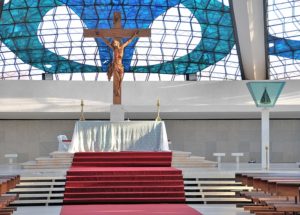
The outer roof of the cathedral is composed of sixteen pieces of fiberglass, each 10 meters wide at the base and 30 meters long inserted between the concrete pillars. Under this is suspended a 2,000-square-meter stained glass work originally created in 1990 by Marianne Peretti, in shades of blue, green, white, and Brown. Inside the cathedral over the nave are sculptures of three angels, suspended by steel cables. The shortest is 2.22 meters long and weighs 100 kilograms, the middle one is 3.4 meters long and weighs 200 kilograms, and the largest is 4.25 meters long and weighs 300 kilograms. The sculptures are by Alfredo Ceschiatti, with the collaboration of Dante Croce in 1970.
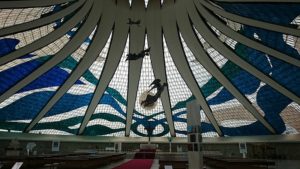
This concrete-framed hyperboloid structure appears with its glass roof to be reaching up, open, to heaven. Most of the cathedral is below ground, with only the 70-meter diameter 42-meter roof of the cathedral, the ovoid roof of the baptistery, and the bell tower visible above ground. The shape of the roof is based on a hyperboloid of revolution with asymmetric sections. The hyperboloid structure consists of 16 identical concrete columns assembled on site. These columns, having hyperbolic sections and weighing 90 tons, represent two hands moving upwards to heaven.
According to Wikipedia





